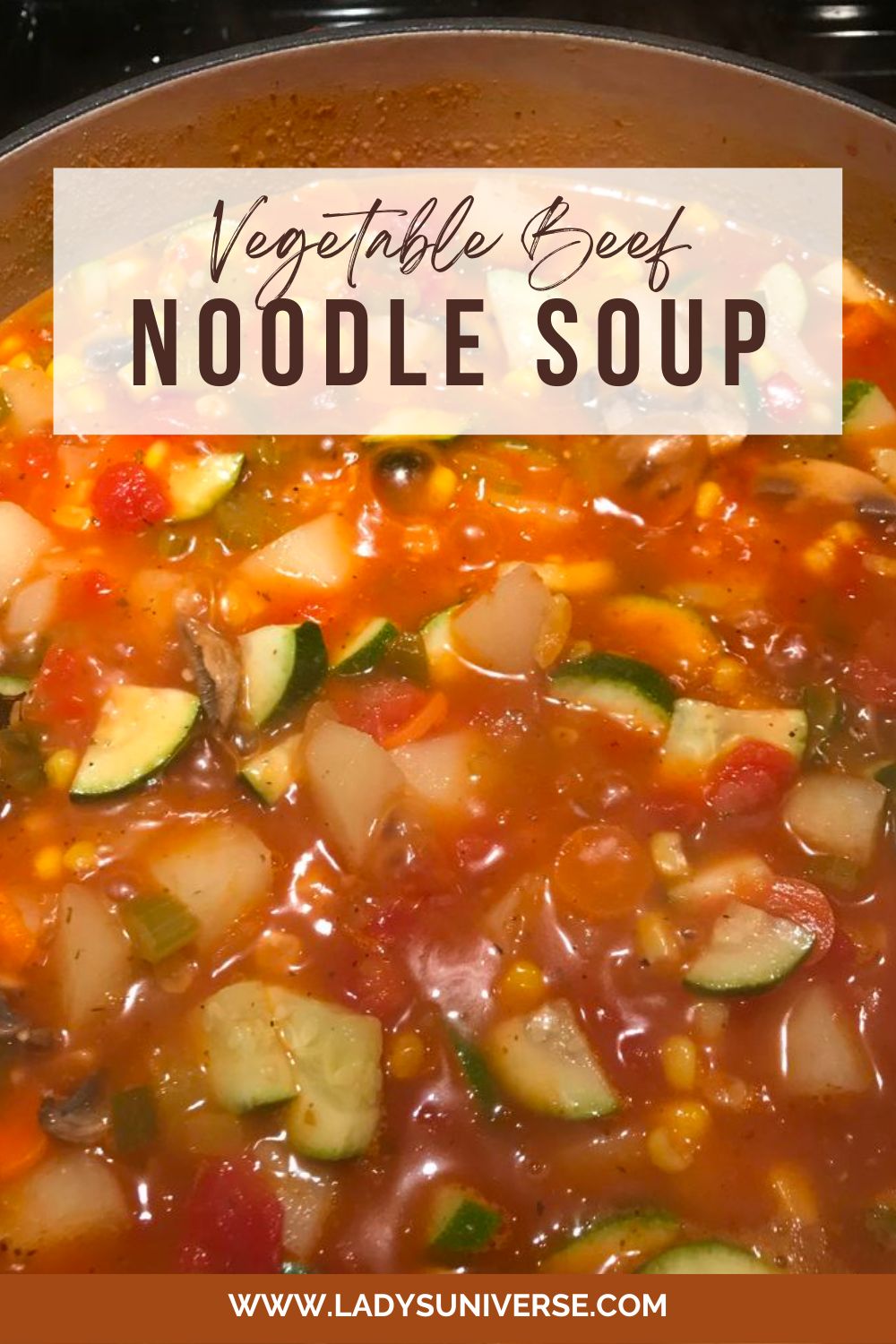Vegetable Beef Noodle Soup, a delectable blend of hearty ingredients and aromatic spices, is a culinary classic that transcends cultures and generations. It’s the kind of comforting dish you yearn for on a cold winter’s day, or when you need a bowl full of nourishment and warmth. Easy to make and packed with nutritious ingredients, this soup promises a symphony of flavors and textures in every spoonful.
Ingredients
Creating a satisfying pot of Vegetable Beef Noodle Soup involves a medley of fresh and wholesome ingredients:
- Beef: 1 pound of stew beef, cut into bite-sized pieces. This provides a rich, meaty base to the soup.
- Vegetables: A selection of vegetables such as 2 carrots, 2 celery stalks, and 1 onion, all diced. Additionally, you may include other vegetables like peas, green beans, or corn to enhance the soup’s nutritional profile and color palette.
- Garlic: 2 cloves, minced. This infuses the soup with a subtle yet robust flavor.
- Beef Broth: 8 cups. The broth acts as the soup’s flavorful foundation.
- Canned Tomatoes: One 14.5 oz can, diced. The tomatoes add a tangy depth to the soup.
- Noodles: 1 cup of dry noodles. You can use any variety you like, but small shapes like elbows, spirals, or shells work well.
- Seasonings: Salt and pepper to taste, along with herbs such as thyme, rosemary, or bay leaves to enhance the soup’s flavor profile.
Instructions
Here’s how to prepare a comforting pot of Vegetable Beef Noodle Soup:
- Brown the Beef: In a large pot or Dutch oven, brown the beef over medium-high heat until all sides are seared. Remove the beef and set it aside.
- Sauté the Vegetables and Garlic: In the same pot, sauté the onions, carrots, and celery until they begin to soften. Add the garlic and cook for another minute.
- Add the Beef and Broth: Return the browned beef to the pot, add the beef broth, diced tomatoes, and herbs. Bring the mixture to a boil.
- Simmer: Reduce the heat to low, cover the pot, and let the soup simmer until the beef is tender, typically about 1-2 hours.
- Add the Noodles: In the last 15 minutes of cooking, add the dry noodles to the pot. Cook until the noodles are tender.
- Season and Serve: Adjust the seasonings with additional salt and pepper if needed. Ladle the soup into bowls, serve hot, and enjoy!
Cultural Impact and Popularity
The popularity of Vegetable Beef Noodle Soup extends beyond geographic boundaries. It is a common comfort food in various cultures, appreciated for its hearty nature and versatile ingredient list. It’s the kind of dish that grandmothers make to perfection, and it has a certain nostalgia about it that reminds people of home and family.
Conclusion
Vegetable Beef Noodle Soup is more than just a dish; it’s a bowl of comfort, warmth, and nutrition. It’s a culinary emblem of cozy winter nights, family gatherings, and the simple pleasure of a home-cooked meal. Each spoonful promises a burst of flavorful beef, a variety of vegetables, and the satisfying texture of noodles, all swimming in a hot, savory broth. Easy to prepare and always a crowd-pleaser, this soup is a staple recipe that every home cook should have up their sleeve. Whether served as a main dish or a warm starter, Vegetable Beef Noodle Soup never fails to satisfy the palate and soothe the soul.




